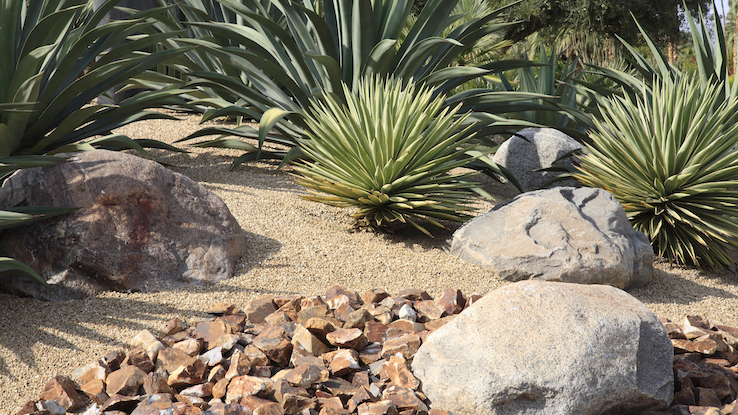How Installing Drip Irrigation Is Good for the Environment

Farm irrigation systems are important for optimal water supply that supports plant growth and food security. Unfortunately, some irrigation systems, especially broadcast watering or sprinkler systems, are problematic. Uneven watering occurs, causing growth in patches, which affects plant health. Plants receiving an insufficient amount of water either die or fail to produce to their optimum. There are also overspray issues, where the sprinkler range covers areas that don’t need irrigation. These problems are a waste of energy and water.
Sprinkler irrigation is energy-intensive and also bad for the planet due to poor water conservation. Current environmental issues such as climate change and water scarcity demand that we use water conservation techniques to adapt. One of the ways is switching from sprinkler irrigation to drip irrigation.
Why Is Drip Irrigation Helpful?

Drip irrigation, also known as trickle irrigation, allows water and nutrients to drip slowly and directly to plant roots. According to the Food and Agriculture Organization of the United Nations (FAO), drip systems release between 2 and 20 liters of water per hour. It’s most suitable for row crops and farmable slopes, and the water must be clean.
Drip irrigation directly waters the plant roots. Some plants are lucky to have water sprayed directly on their roots in a sprinkler system, leading to uneven growth. However, due to the precision of drip systems, every plant has dedicated nozzles to water its roots. This improves water accessibility.
Additionally, due to the slow nature of release in a drip system, most of the water is absorbed by the soil surrounding the roots, percolating slowly. This ensures that the plant takes up optimal water. Unfortunately, in a sprinkler system, it’s not always guaranteed that the plant will fully benefit. The high pressure and speed of water released can cause runoff, hence lesser soil absorption rates. Experts report that water loss through runoff in a drip system is nearly zero.
Therefore, farmers using drip irrigation may experience better crop yield and higher income. This is because there’s less money spent on water bills as more water is used efficiently, and plants are watered more resourcefully, leading to better yield.
Types of Drip Irrigation Systems

Different types of drip irrigation systems exist, ranging from DIY to elaborate commercial options. DIY systems are important for farmers working on a limited budget. A PVC drip system is an easy-to-do DIY project. Buy a 3/4-inch pipe, then drill 1/16-inch holes every 6 inches. This works for small crops. For larger crops, the 3/4-inch pipe works, but you’ll instead drill 1/8-inch holes and make a water-holding basin. When the basin is filled with water, it’ll percolate into the soil where the plant needs it. It’s also important to lay your DIY pipes before planting so that you can know where to place the plants. It’s also advisable not to glue the pipes together to allow you to change configuration when need be, especially when crop rotating.
You can also buy a fancy drip system. Pressure compensating (PC) emitters are the best option. These emitters discharge the same amount of water, irrespective of the varying pressures. This means that any pressure difference and landscape orientation are corrected, irrigating all plants at the same pressure and speed. Farmers in sloped areas should consider this.
Flat terrains can work with non-pressure compensating emitters. Unfortunately, these don’t correct pressure and elevation differences, so some farm areas experience more irrigation than others. This may be negligible depending on how flat the farm is and the pressure at the water sources.
Depending on the manufacturer, some emitters, both pressure and non-pressure compensating, are installed with self-flushing mechanisms to help unclog the waterways.
Other Water Saving Options That Are Good for the Environment

Saving water also means planting plants that adapt to your local climate. This is known as xeriscaping. The National Geographic Society defines xeriscaping as the practice of landscaping with plants that need little or no more water than the local climate provides. This means that you’ll plant moisture-rich plants in areas that experience wet climates. A drier climate requires plants that are adapted to water scarcity. This way, you save money and energy that you’d use in irrigation systems. Reportedly, xeriscaping reduces water usage by up to 75%. Xeriscaping also promotes water conservation by planting the right plants that don’t extract too much groundwater in dry areas.
Use WaterSense labeled controllers to only irrigate your plants when they need it. Reportedly, these controllers can save you 15,000 gallons of water annually. Of course, this also translates to saved money.
You also have to think about your total water consumption in the home, not just at the farm or lawn. You can achieve indoor water savings by fixing leaking faucets and pipes, using low-flow showers and toilets, recycling greywater, taking shorter showers and turning off the tap when brushing your teeth. Water-efficient systems, especially those that need heating like showers and sink faucets, lead to energy usage, lowering your energy bill.
The call for water conservation is most important with the increasing water scarcity issues worsened by climate change. The added benefits of financial savings make these strategies important for all. A drip irrigation system makes more water available to plants, increasing yield and improving income from farming. Xeriscaping ensures that you don’t unnecessarily irrigate your lawn because the plants in your lawn are adapted to your local climate. Indoor reduction of water usage also translates to lower water and energy bills. So, you could start to save the earth and your wallet too.





